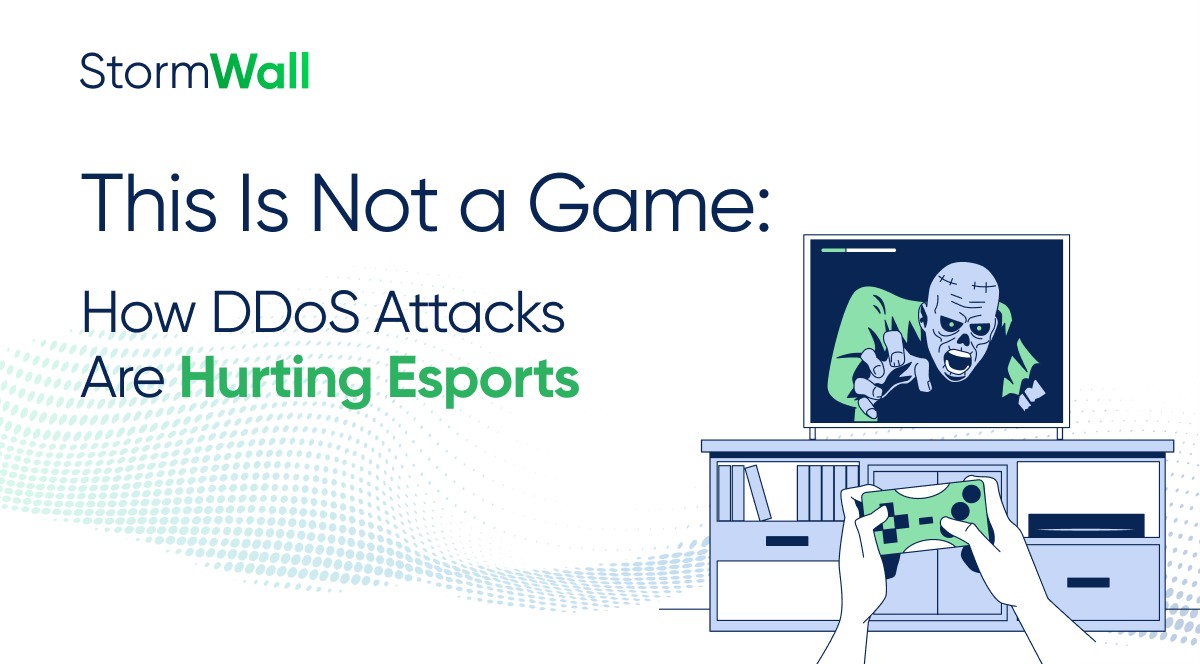In esports, every second matters. That’s why one of the biggest threats to this industry is DDoS attacks. Sudden lags, connection drops, and other disruptions can lead to millions of dollars in losses for teams, sponsors, tournament organizers, and game developers.
In this article, we’ll explore the history of DDoS attacks in esports, how hackers manage to disrupt matches, and why they continue to do so.

The Evolution of DDoS Attacks in Gaming
Stage 1: Personal Vendettas
The first DDoS attacks in gaming emerged in the early 2000s, just as online games were gaining momentum. The attackers’ goals were simple: to disrupt gameplay or ruin the experience for others.
Often, these hackers were gamers themselves, using DDoS attacks to take revenge on opponents over defeats or in-game arguments. The most popular multiplayer games of the time—like World of Warcraft, Counter-Strike, and RuneScape—were frequent targets.
Stage 2: Targeting Companies
By the 2010s, DDoS attacks had become more organized and widespread, with gaming companies themselves becoming the new targets. Hackers would overload game servers, causing massive outages that frustrated millions of players worldwide.
Popular games like League of Legends, Dota 2, and Minecraft were hit hard during that period, leading to both financial losses and reputational damage for developers.
Stage 3: Tournament Disruptions
Since 2015, DDoS attacks have increasingly targeted esports championships. Major tournaments, including those for Hearthstone, Dota 2, and CS, have all fallen victim to these attacks.
One notorious example occurred during The International 2015 Dota 2 championship, where a DDoS attack delayed the event for hours as the organizers worked to restore critical servers, leaving both teams and fans frustrated.
Stage 4: Self-Promotion
In recent years, DDoS attacks have become even more strategic and destructive, with major esports tournaments now being prime targets. Hackers often launch attacks during critical match broadcasts, when substantial prize pools and team reputations are at stake.
At the same time, these attacks are carried out for PR purposes, with hacker groups even announcing their plans before major events. For instance, in June 2024, the Middle East saw a 62% surge in DDoS attacks on the entertainment industry, coinciding with the Esports World Cup.
Read also: Evolution of DDoS Attacks: From the 1990s to Today
Exploring More Reasons Behind Attacks
One of the most obvious reasons is the desire to influence the outcome of a match. This is similar to any other sport involving betting. If a malicious actor can provoke a victory or loss for a certain team, they benefit from it.
Read also: Why DDoS Attacks Happen: Reasons and Psychology Behind DDoS
An example is any major League of Legends championship. According to the rules, a team can be automatically disqualified if its players are offline for more than 10 minutes. A successful DDoS attack on a team’s lobby guarantees that they will not be able to continue participating in the tournament.
In the history of esports, there have been several instances where an attacker was one of the championship participants. One of the most high-profile examples is the story of gamer 5PLUS50K12. In 2017, he won a championship in RuneScape with a prize pool of $20,000. However, shortly after that, he was disqualified as many opponents accused him of creating a botnet and attacking them. Similarly, a player known as Ecstasy admitted to using DDoS attacks to win a Dota 2 tournament the same year, leading to a two-year ban from esports events by the Esports Integrity Coalition (ESIC).
How Hackers Strike
Hackers typically carry out DDoS attacks at various levels of an online game. The most common targets include:
- Game Servers: By flooding servers with traffic, hackers can cause widespread malfunctions, leading to player disconnections. In extremecases, entire tournaments have been stopped due to server failures, especially during final matches when server load is already high.
- Lobbies: Attacking the game lobby, where competitors gather before matches, can disrupt a team’s preparation and create confusion. Lobbies are often targeted to undermine team morale when players are at their most mentally vulnerable, forcing them to restart games or devices.
- Game Sessions: During active gameplay, DDoS attacks can cause lags and performance issues, making it impossible for players to compete effectively.
Read also: How to Protect Gaming Services from DDoS Attacks
Conclusion
The rise of DDoS attacks in esports highlights the increasing vulnerability of the industry, particularly during crucial moments in tournaments. Ensuring secure gameplay during peak times presents a complex challenge that directly affects the profitability and reputation of organizers and the wider gaming industry.
To effectively safeguard against DDoS attacks, partnering with specialized service providers like StormWall is essential.

DDoS Protection for Websites
- Activate protection in 10 minutes
- 24/7 technical support




















